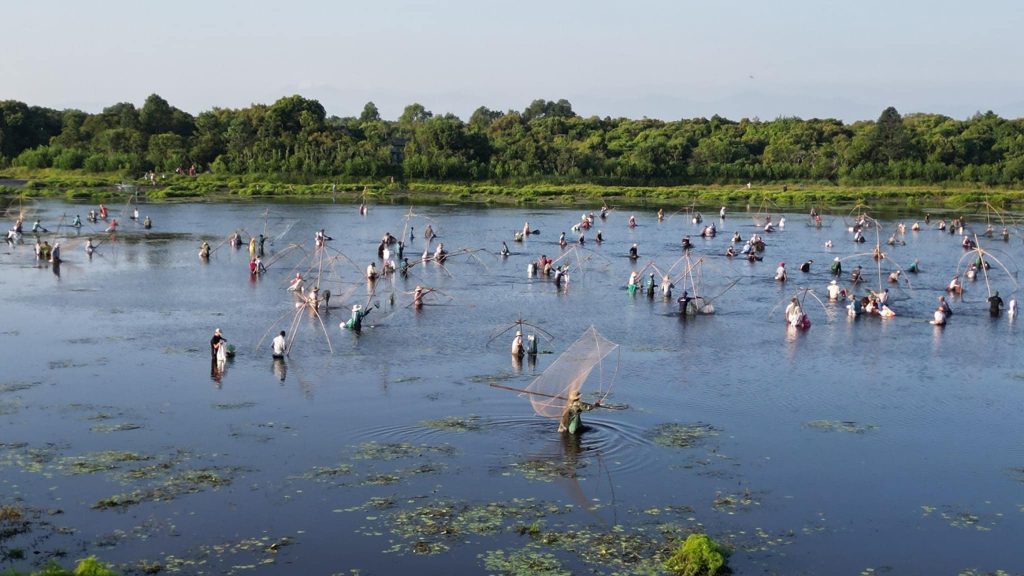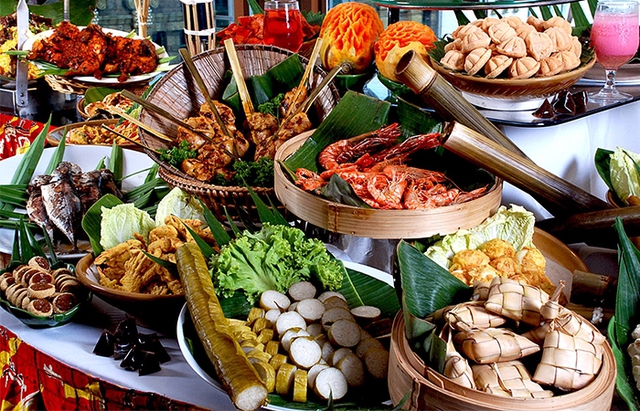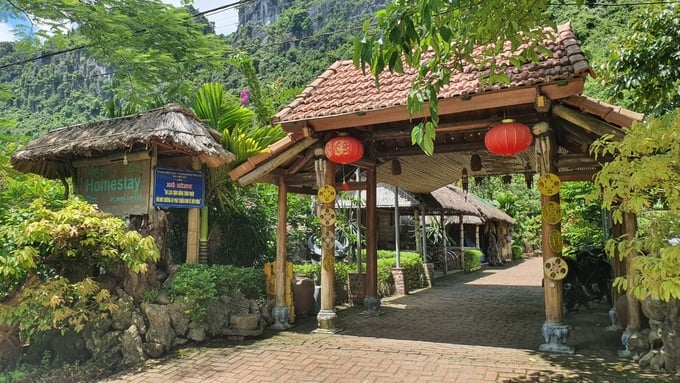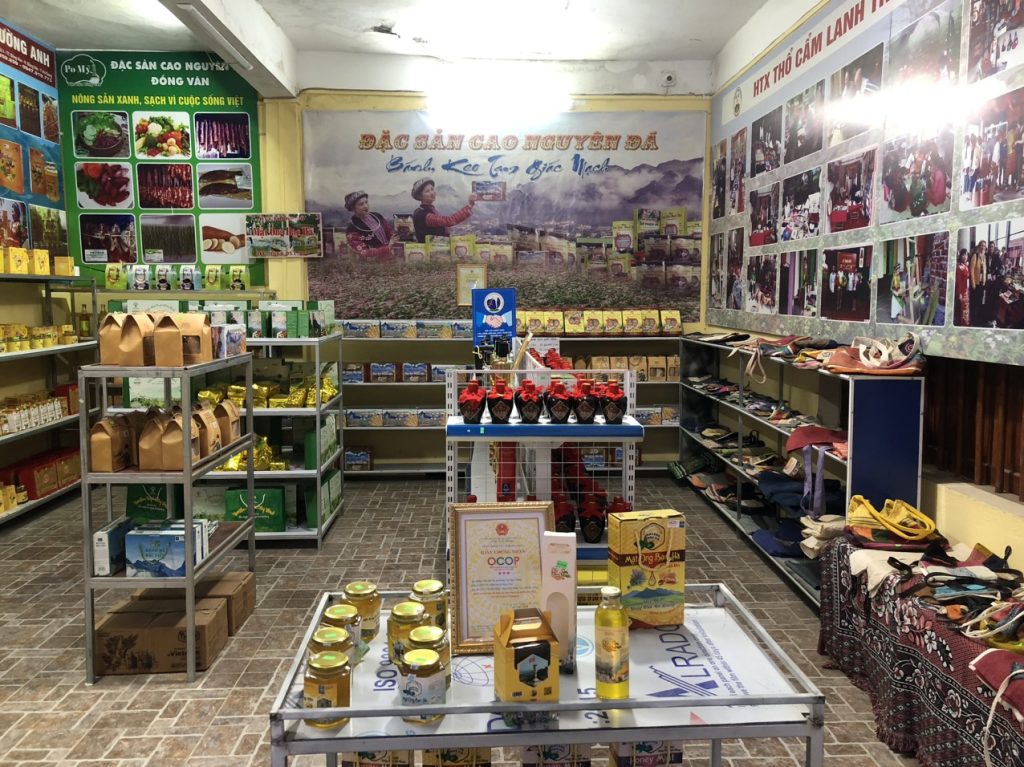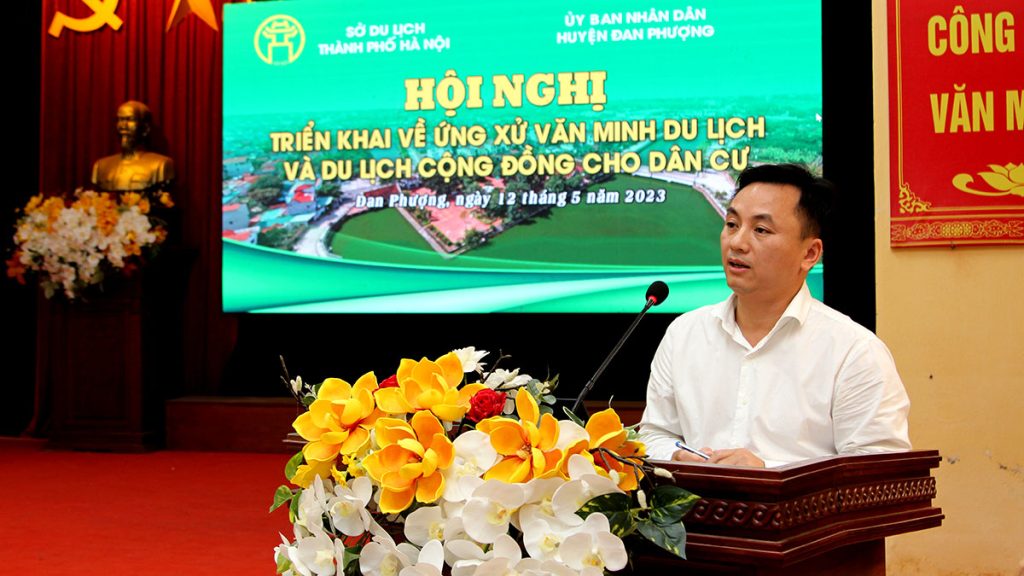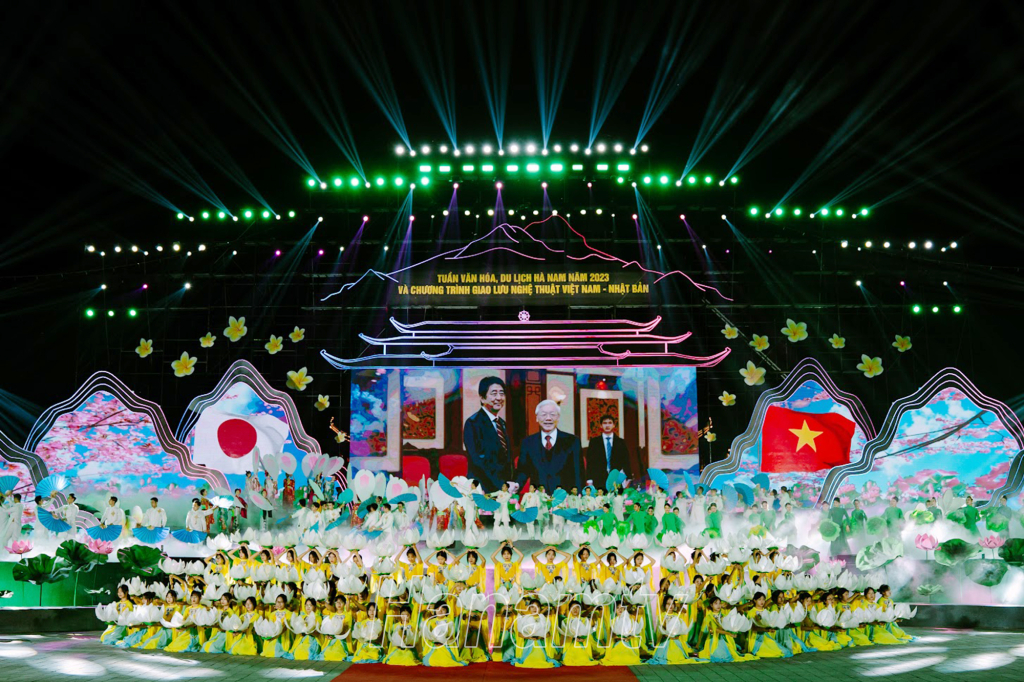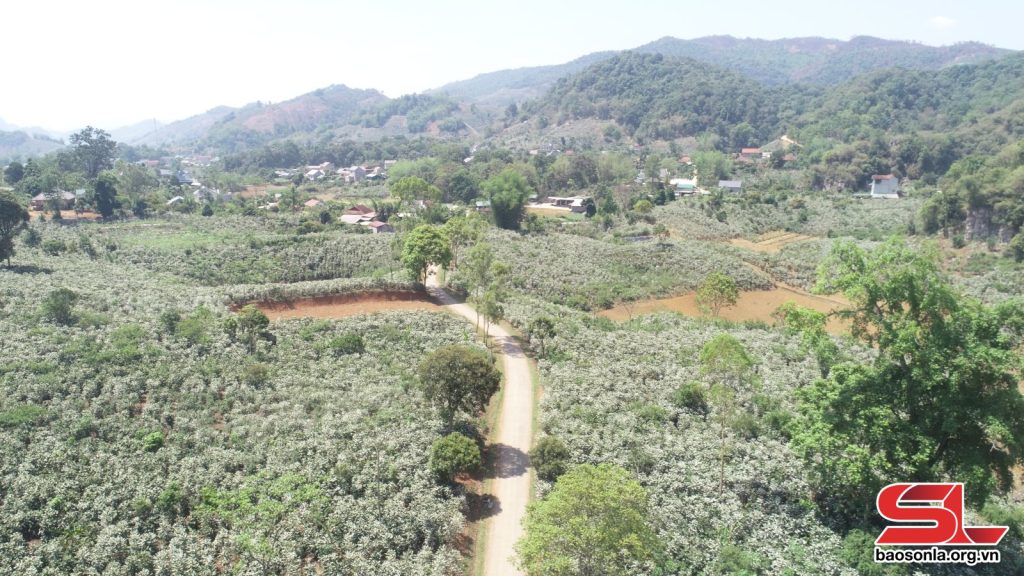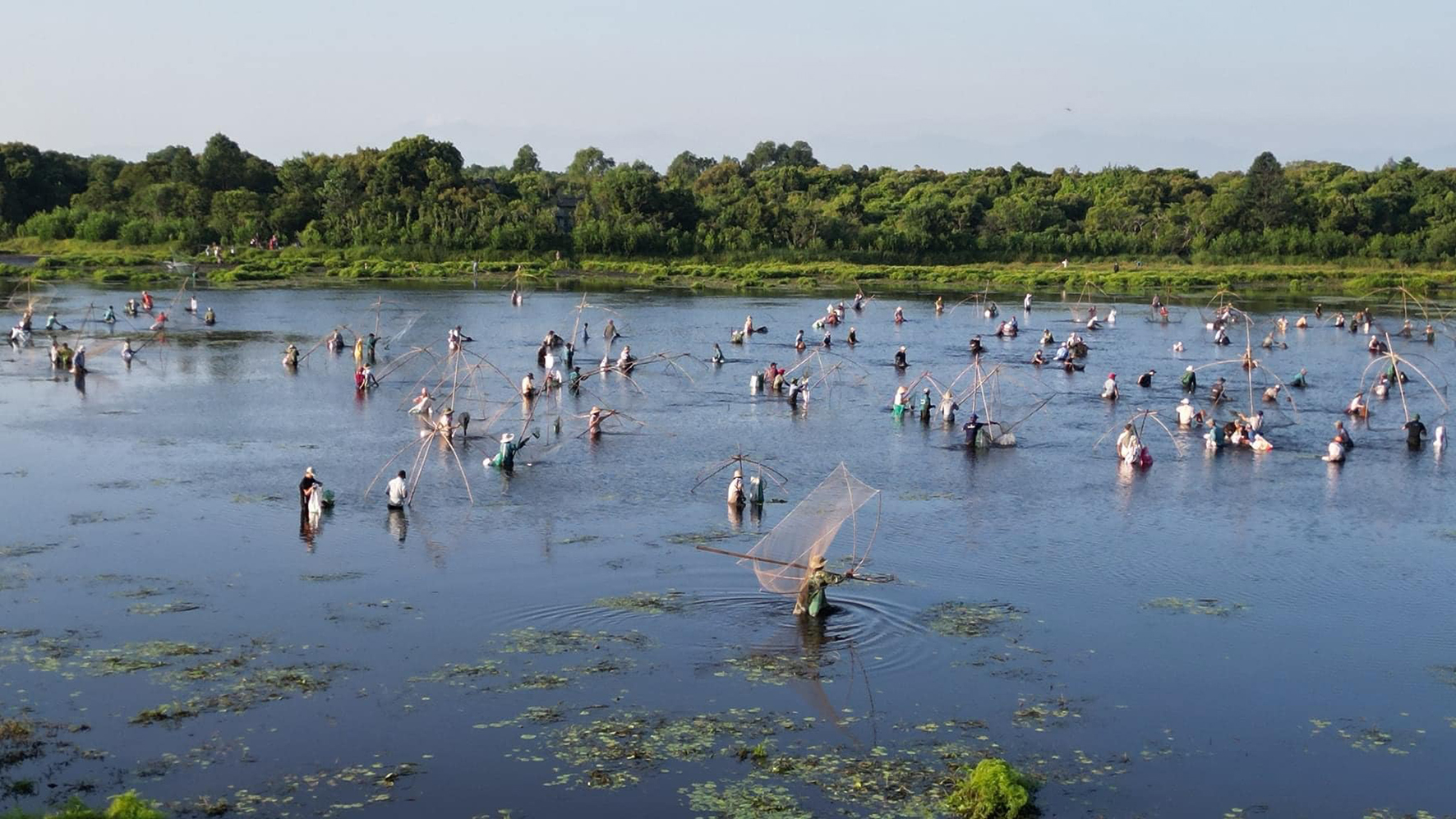
This is a unique and renowned traditional cultural festival that takes place only once a year. Known as “Phá Trằm,” it essentially involves releasing water to catch fish for sustenance after days of hard work during the farming season. The festival creates a joyful and enthusiastic atmosphere among the local people and neighboring regions. Photo: T.T
Benefiting from unwavering support and facilitation across different levels and sectors, and propelled by the collaborative endeavors of organizations, businesses, cooperatives, and rural tourism initiatives, Hai Lang has witnessed the thriving growth of its rural tourism sector.
This progress has left an initial imprint and yielded positive outcomes in the ongoing efforts toward constructing new rural areas.
Hai Lang District, endowed with abundant natural resources, offers opportunities for the establishment of various tourism service enterprises. The expansive western hilly region boasts extensive natural forests, while the plains feature natural lagoons and reservoirs, and numerous rural areas showcase picturesque landscapes intertwined with festivals and distinctive traditional craft villages.
Tourist hotspots in the district predominantly center around rural locales, including the Tram Tra Loc Eco-tourism area in Hai Hung Commune, My Thuy Beach in Hai An Commune, and the Virgin Mary Pilgrimage Center La Vang in Hai Phu Commune. Moreover, the district has undertaken a survey to identify new tourist sites and routes along the O Lau River upstream, Chong Waterfall, Tram Khang, and Chan Waterfall, intending to invest in their tourism development.
The Tram Tra Loc Ecotourism Area has been recognized as a pivotal long-term socio-economic breakthrough for Hai Hung Commune. With the backing of both the province and district, essential infrastructure and transportation systems within the Ecotourism Area, as well as connectivity with other locations, have received investments totaling approximately VND50 billion (US$2 million). This funding has substantially met the travel requirements for tourism.
Furthermore, the province has committed resources to construct 10 hectares of fish ponds integrated with fruit tree cultivation in the Ecotourism Area’s buffer zone, catering to the needs of visiting tourists. Le Quang Dieu, Head of Tra Loc Village, emphasized that aside from preserving nature, safeguarding biodiversity, and upholding community culture, the Tram Tra Loc Ecotourism Area holds significant potential for ecotourism development, thereby generating economic resources for the local populace.
In 2023, Hai Lang District initiated an investment plan to restore five historical relics. Collaborating with the Provincial Investment, Trade, and Tourism Promotion Center, efforts have been made to publicize and promote Hai Lang’s tourist destinations, such as the Tram Tra Loc Ecotourism Area and the Virgin Mary Pilgrimage Center La Van.
The Hai Lang District Youth Union, in collaboration with the District Culture and Information Department, has undertaken the digitization of four historical and cultural relics. These include the Cau Nhi communal house in Hai Phong commune, the site of the My Thuy massacre in 1948 in Hai An commune, and provincial-level relics such as the Phuong San location in Hai Phu Commune and the site marking the execution of martyr Le Thi Tuyet in Hai Hung Commune. QR Code access points have been installed for these locations.
In the pursuit of building new rural areas, Hai Lang District is committed to advancing rural tourism by leveraging the potential and strengths of agriculture, craft villages, culture, and the local ecological environment. The objective is to enhance the material and spiritual well-being of the local population and contribute to restructuring the rural economy for inclusive and sustainable development.
Vice Chairman of Hai Lang District People’s Committee, Duong Viet Hai, outlined the district’s plan to implement the Rural Tourism Development Program for the period 2023-2025. This plan prioritizes the upgrading and investment in developing rural tourism destinations aligned with the criteria for constructing new rural areas. Additionally, it emphasizes the creation of rural tourism products reflecting local characteristics and the development of high-quality human resources in rural tourism.
The district aims to standardize rural tourism destinations and products, aspiring to establish 1-2 rural tourist destinations associated with agriculture, culture, craft villages, or the local ecological environment. Furthermore, the goal is for 50% of rural service businesses to be recognized for meeting tourist service standards.
The development of rural tourism is integrated with the digital transformation process, with a target to connect at least 50% of rural tourist attractions on tourism promotion information pages through digital technology. The plan also envisions 100% of rural tourist attractions being introduced and promoted digitally, and 50% applying electronic transactions in tourism activities. The district plans to establish at least one specific rural agricultural tourism chain model.
To execute the plan, Hai Lang District is expected to concentrate on key tasks such as upgrading and investing in the development of rural tourist attractions, aligning with the criteria for building new rural areas. The focus will also be on developing rural tourism products with local characteristics, enhancing the quality of rural tourism human resources, and promoting communication to build awareness of sustainable rural tourism development.
The district emphasizes the importance of forming rural tourism tours and routes that are closely tied to the preservation and promotion of cultural values and environmental protection. Additionally, there will be a concerted effort to implement provincial and local policies to encourage investment in rural tourism, contributing to the successful execution of the new rural development program and acting as a catalyst for socio-economic development in the rural areas of Hai Lang.
Bao Binh – Ngoc Mai
Quang Tri Newspaper – en.baoquangtri.vn

